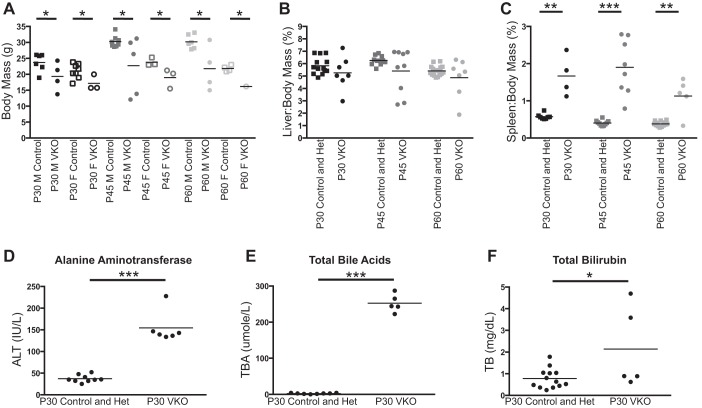Fig. 3.
VKO mice demonstrate decreased body mass, splenomegaly, and liver injury. To assess the phenotype of VKO mice, markers of global mouse health and physiology as well as liver health and function were assessed. The body mass and organ mass of P30, P45, and P60 control and VKO mice were measured, and the organ-to-body mass ratio was calculated for liver and spleen. A: at P30, P45, and P60, several VKO mice display total body masses that are much less than their sex-matched littermate controls. VKO mice, sorted by gender, have significantly lower body masses at all time points for both males (M) and females (F). Statistics were not performed for P60 females because of the high lethality before this time point and the consequent low number of P60 VKO females obtained. B: liver-to-body mass ratio (%) was not significantly different between control and VKO mice at P30, P45, and P60 despite several VKO mice displaying abnormally low liver-to-body mass ratios. C: VKO mice display splenomegaly, having significantly elevated spleen-to-body mass ratios at P30, P45, and P60. To assess liver health and function, serum from P30 control and VKO mice was tested for alanine aminotransferase (ALT), total bile acids (BA), and total bilirubin (TB). No difference was observed between control and heterozygous mice in any of these analyses. D: VKO mice have elevated levels of ALT in serum at P30. E: VKO mice have elevated levels of BA in serum at P30. F: some VKO mice have elevated levels of TB in serum at P30. Although some VKO mice display normal levels of TB, the difference between control and VKO mice was statistically significant. *P < 0.05, **P < 0.01, and ***P ≤ 0.001.

